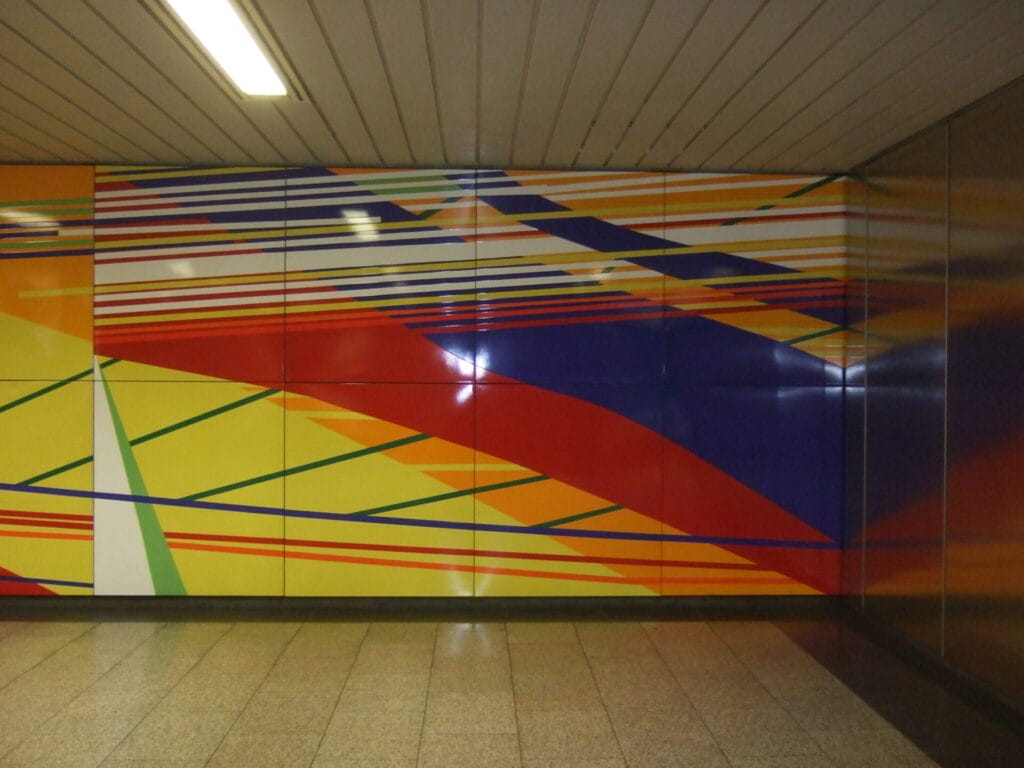Gerhard Richter is one of the most respected and acclaimed artists of our time, and his art is admired by people from all backgrounds. His work spans several genres and styles, from abstract to photorealism, and his use of color, light, and textures adds a personal touch to each piece.
Throughout his career he has been celebrated for his ability to bridge different movements in art and create work that is both passionate and profound. His works often reflect on current events and capture moments of history with beautiful vivacity. From intense political pieces to ethereal landscapes, Richter’s art has something for everyone.
In this article we will explore the various aspects of Gerard Richter’s art and admire his masterful works. Let us dive into this brilliant artist’s career and take a closer look at what makes him so special.

Gerhard Richter is widely celebrated as one of the greatest living German painters. His work has continuously evolved—from documentary photography to abstract painting—yet has always remained true to its core elements of haunting beauty, layered complexity and a unique ability to capture movement.
As a leading figure in the 20th century avant-garde art movement, Richter’s works reflect the social and political turmoil of postwar German history. In his early works, he made powerful comments on the political events of his time—the 1968 student protests and their aftermath—by blending photorealism and gestural abstraction. In more recent years, he has explored themes such as consumer culture, personal identity and landscape painting as a form of social critique.
Whether it is an abstract painting or an oil portrait, Richter’s work offers a visual conversation about our world today, challenging us to reconsider our perceptions about art and contemporary life. His incredible breadth of subjects lends an unexpected depth to modern art that continues to inspire viewers around the globe.
Gerhard Richter is considered one of the most influential painters of the late 20th century. His works bridge traditional romanticism with a modernist esthetic, creating mesmerizing pieces that fascinate and engage. Richter’s art pays homage to Cubism, Impressionism and Expressionism in both subtle and obvious ways.
The artist’s work typically involves blurred or photo-based images, often incorporating bright colors and bold brush strokes. He is particularly known for his detailed examination of color theory as well as his ability to capture a sense of depth and emotion. In addition, his paintings often explore themes of alienation, identity and place.
By drawing on both traditional and modernist techniques in his painting, Gerhard Richter managed to create something entirely new—an art that offers a unique perspective on human experience while staying true to its roots in the great artistic traditions from which it emerged.
Gerhard Richter’s use of color is a hallmark of his artistic style. Rather than relying on the vibrant hues and textures of traditional painting, Richter often relies on grayscale or monochromatic color schemes to create his work. This limited palette brings a unique sense of depth to his paintings, as well as an emphasis on texture and form rather than pure color.
Richter’s approach to color has been influenced by a number of sources, including modernist art movements such as Cubism and Realism. His commitment to esthetic restraint is also evident in his rejection of emotionally charged shades that are often associated with traditional painting. Instead, Richter uses muted tones, such as blues and grays, to create works that are restrained yet powerful in their simplicity.
The role of color in Richter’s work is further explored through his choice of materials. In addition to the paints he uses for the majority of his work, he has also turned to unconventional materials such as wax and enamel spray paints to add additional dimension and texture to certain pieces. By experimenting with different mediums and techniques, Richter is able to explore the boundaries between traditional painting methods and alternative approaches.
Gerhard Richter is renowned for his explorations of the abstract in art. This exploration often leads to an ambiguous relationship between representation and abstraction, a hallmark of Richter’s oeuvre.
Richter’s approach to abstraction is both intellectual and emotional, combining elements of instinct and control. By utilizing different mediums such as painting and photography, he is able to create images that seem to exist somewhere between representation and abstraction. His work often plays with the tension between the two forms, creating ambiguous compositions that leave the viewer captivated and uncertain.
Richter also utilizes a variety of materials in works that range from oil paint on canvas to photographs printed on aluminum panels. His use of color creates further ambiguity between representation and abstraction as he often combines bright, vivid colors with blurred textures or monochromatic motifs.
Richter’s approach to abstraction has been both influential and inspirational, inspiring many other artists including Damien Hirst, Jeff Koons, Takashi Murakami, Jasper Johns, Robert Rauschenberg, and more. His work has pushed the boundaries of what we think about when we consider abstract art and it is clear that his legacy will live on for many years to come.
For the viewer, the works of Gerhard Richter evoke a particular kind of emotion – one that combines both beauty and disorientation. This is due in part to his use of conceptualism, a style of art which emphasizes the idea behind the work rather than its visual form and materiality.
Richter’s most iconic works likely draws on his unique take on conceptualism to get its impact. He often includes elements such as text, drawings, photographs, and objects in his paintings to create something more than just an esthetically pleasing painting. His work often explores themes such as memory, history, language, and social commentary through the use of these elements.
The artist has also been known to employ techniques such as blurred brushwork, layering of images or text, and erasure in his work. These techniques allow him to explore themes ranging from personal memories and identity to political issues such as war and migration. Richter’s use of conceptualism allows him to convey complex ideas through a single image in a way that resonates with viewers on an emotional level.
The German artist Gerhard Richter is one of the greatest painters of our time, renowned for his unconstrained approach to the canvas. Alongside his creative expression, Richter’s work was touched by a sense of social and political turmoil.
Throughout his career, Richter’s art has been shaped by his experiences living through the events that took place in Germany during World War II, both in East and West Germany. He became known for painting scenes that depicted the trauma of these years, and he often blurred the lines between abstraction and realism in order to achieve a greater affect. His landscapes of bombed-out buildings were particularly powerful—they captured both the wreckage of war and its lingering consequences.
Richter also examined themes of displacement, migration and unity throughout his artwork, including works like “The Two” which explored the idea of duality within post-war Germany—this piece was particularly successful in conveying the uncertainty that arose from living with divided nations. Similarly, Richter’s “Mother And Child” illustrated how mothers are deeply affected by the shifts that occur during times of chaos and unrest.
Richter’s work continues to resonate with contemporary audiences as it offers a unique perspective on how politics shape our lives—for better or for worse.
It’s clear that Gerhard Richter was a remarkable artist who achieved success in both the Abstract Expressionist and Pop Art movements. His innovative use of painting has left a lasting impression in art history and his paintings are still sought after today. His approach to painting and the artistic statements he made have left him a revered figure in the contemporary art world. While his work may have been misunderstood or overlooked during his time, the appreciation of his art has only grown and increased over time. Gerhard Richter’s art is a lasting tribute to the power of creativity and exploration.












